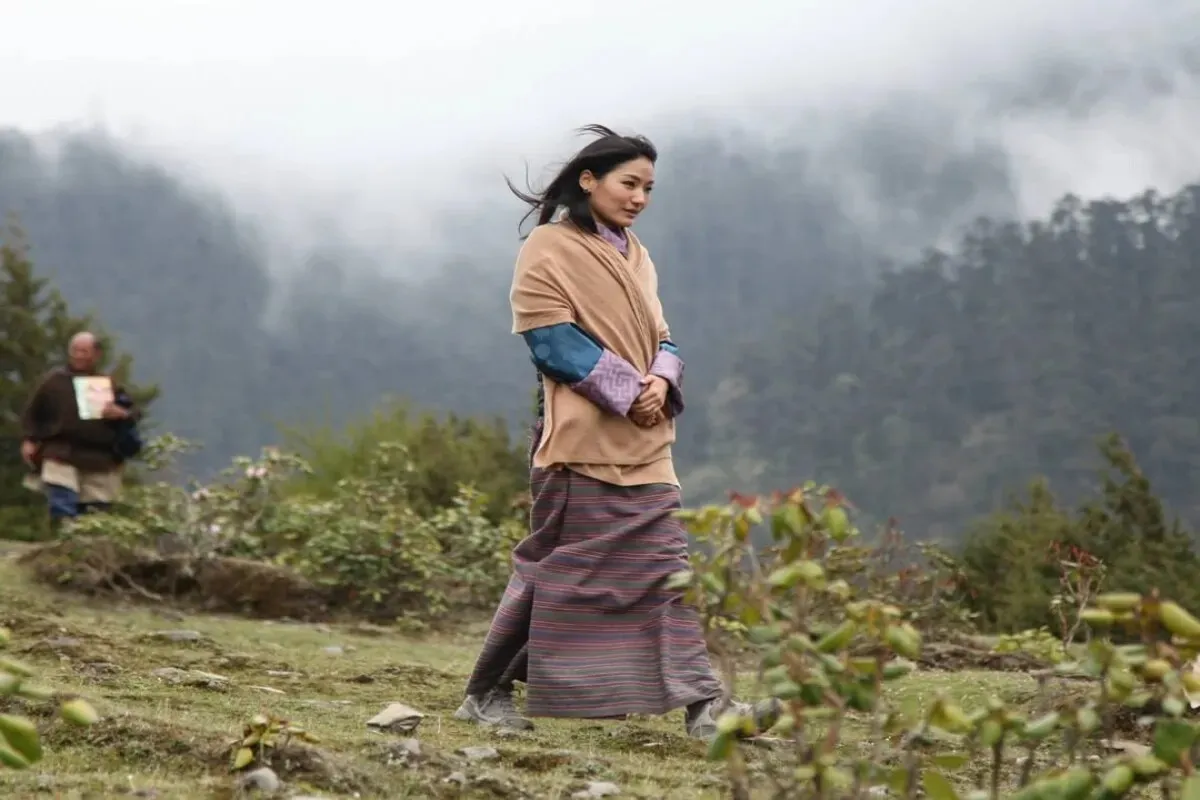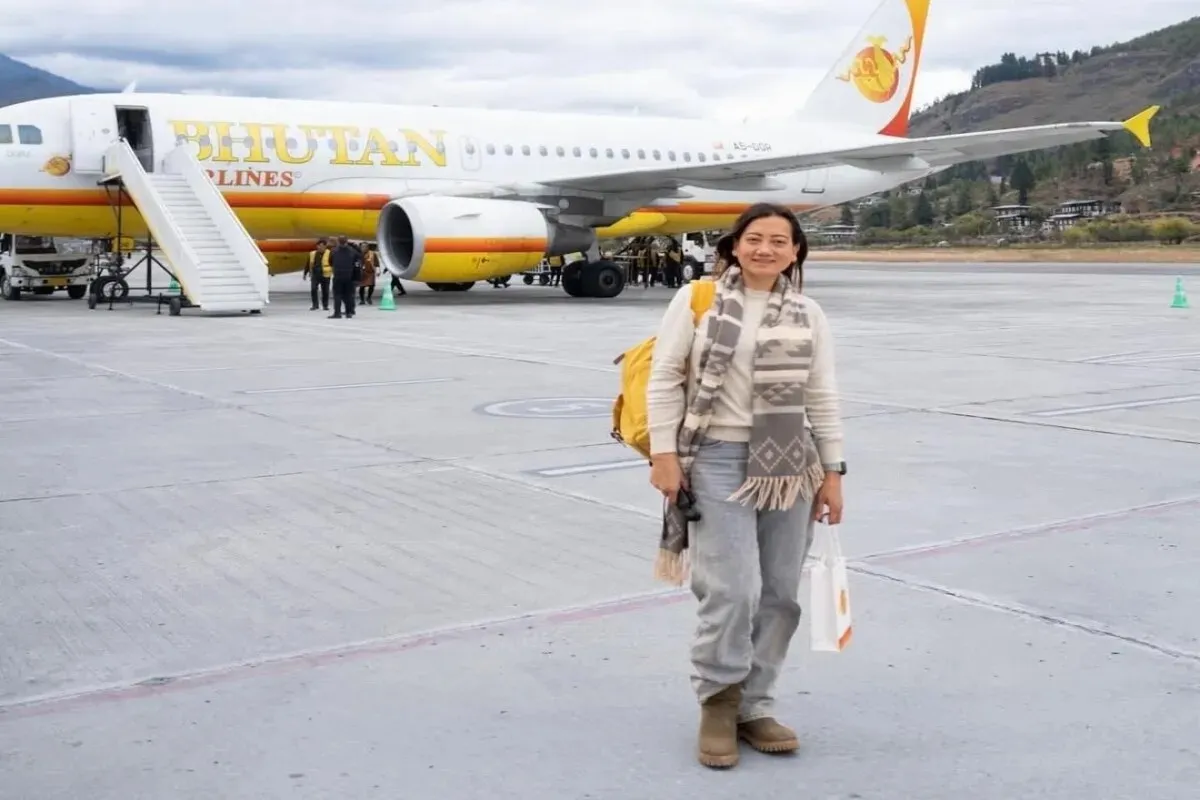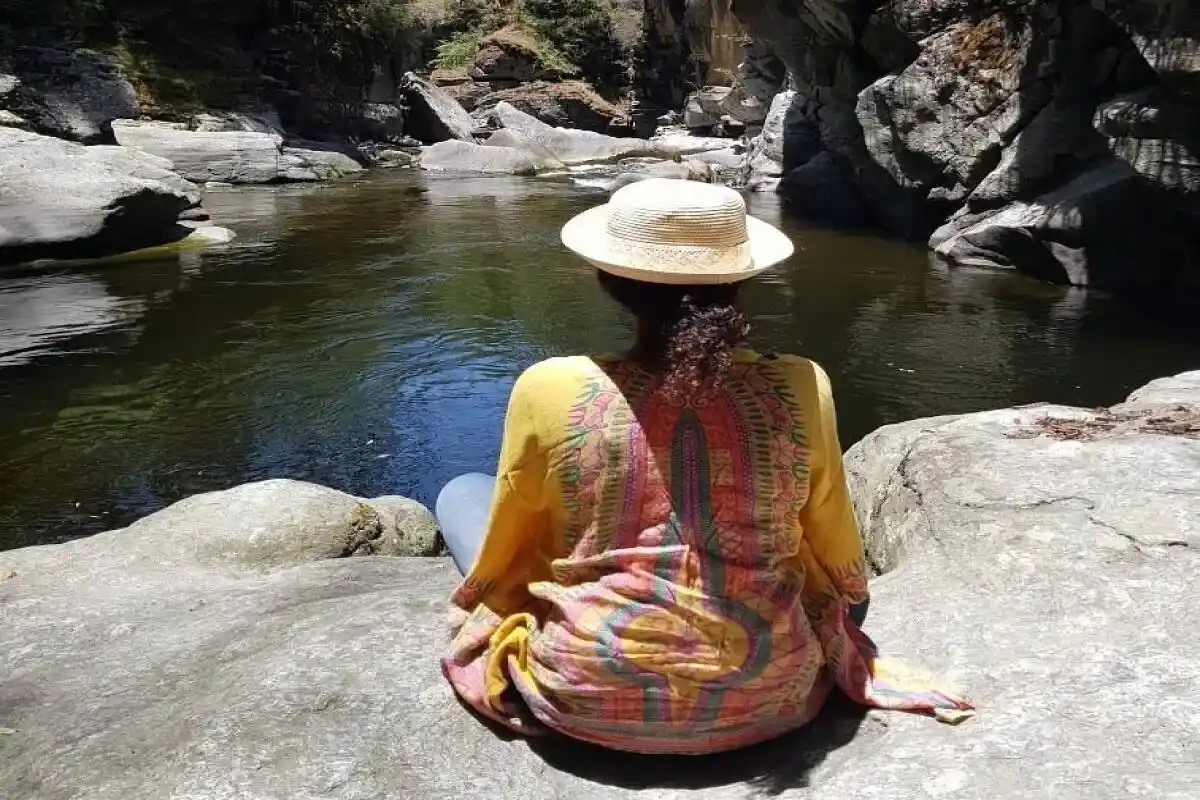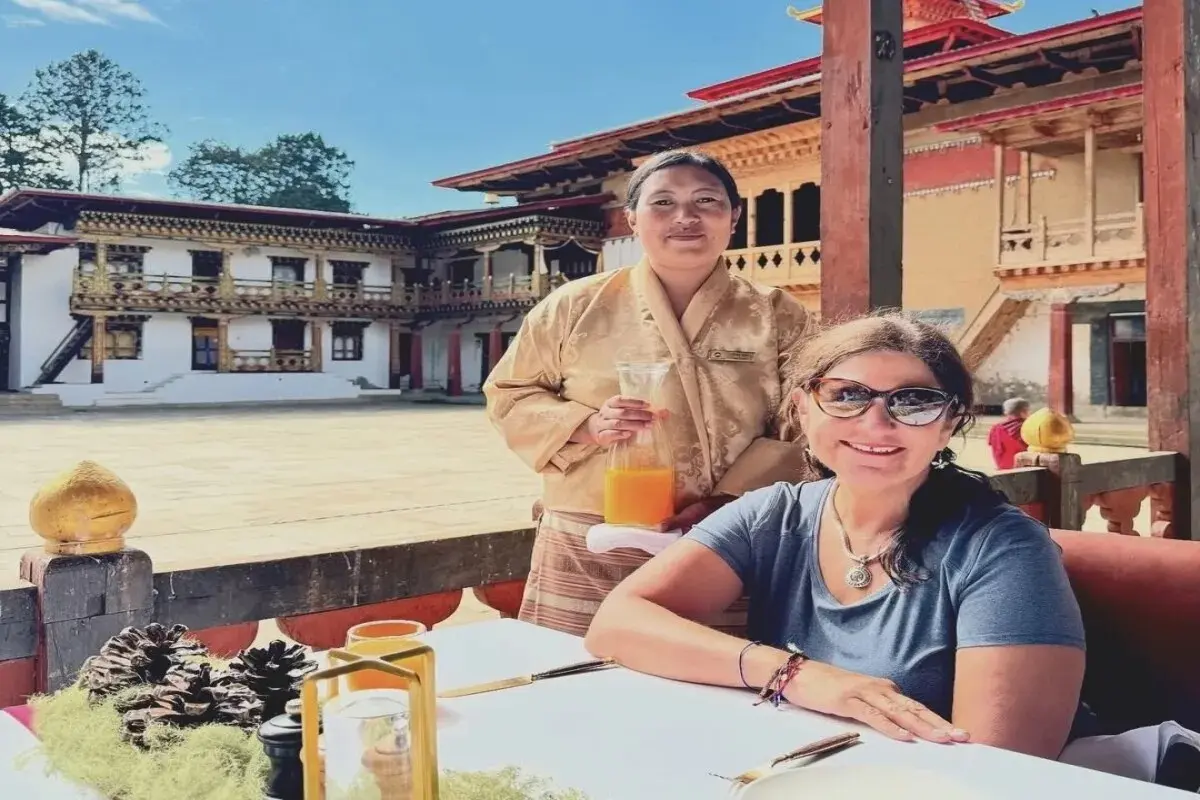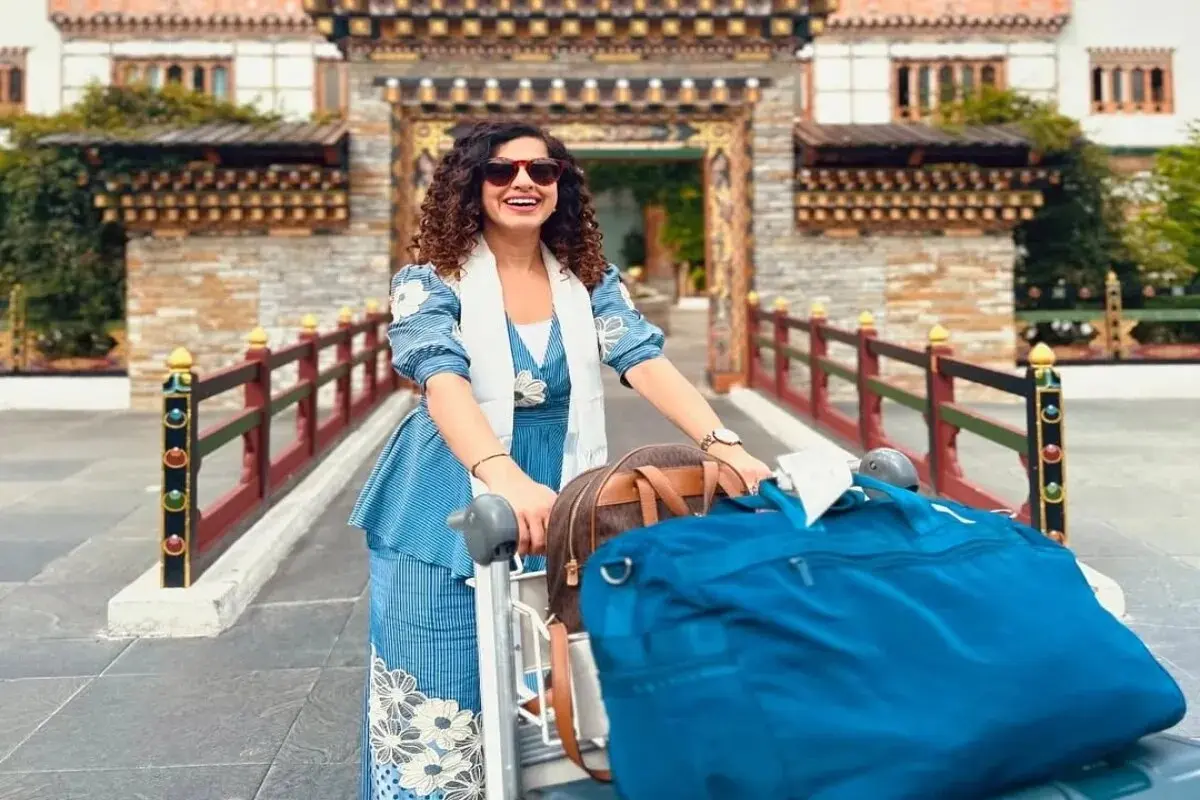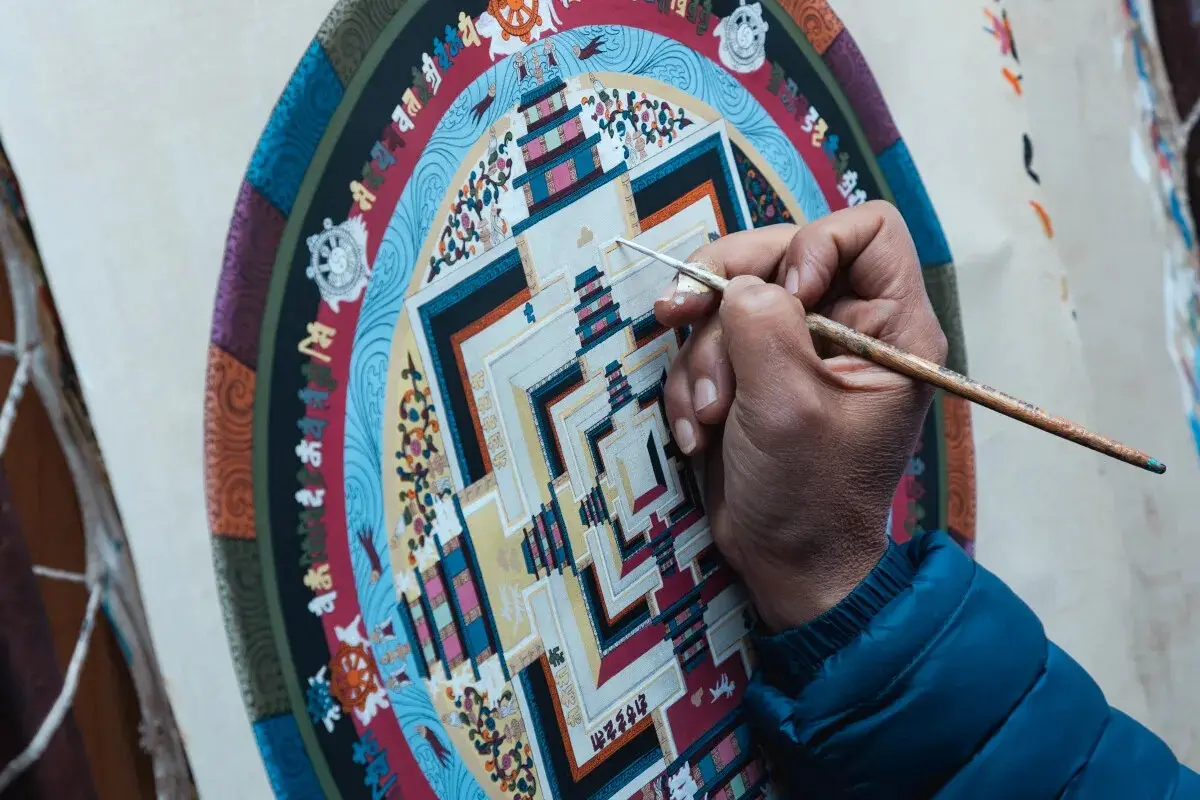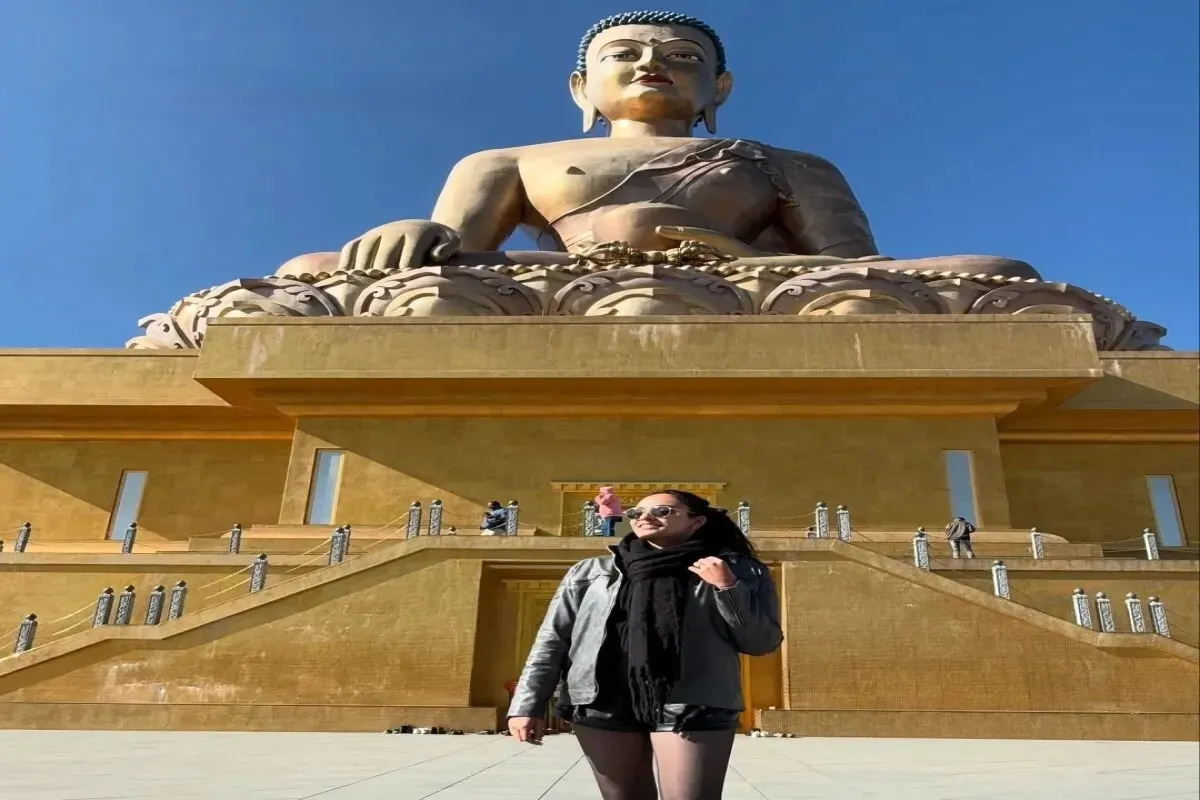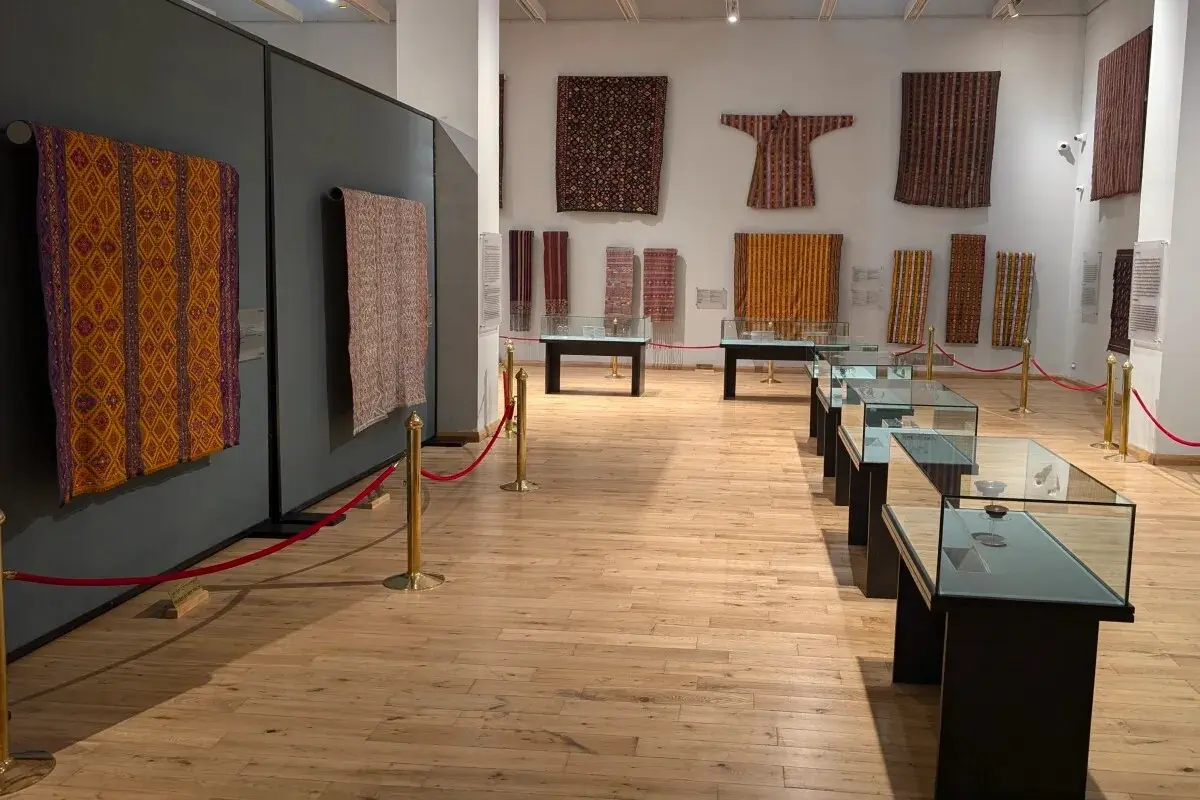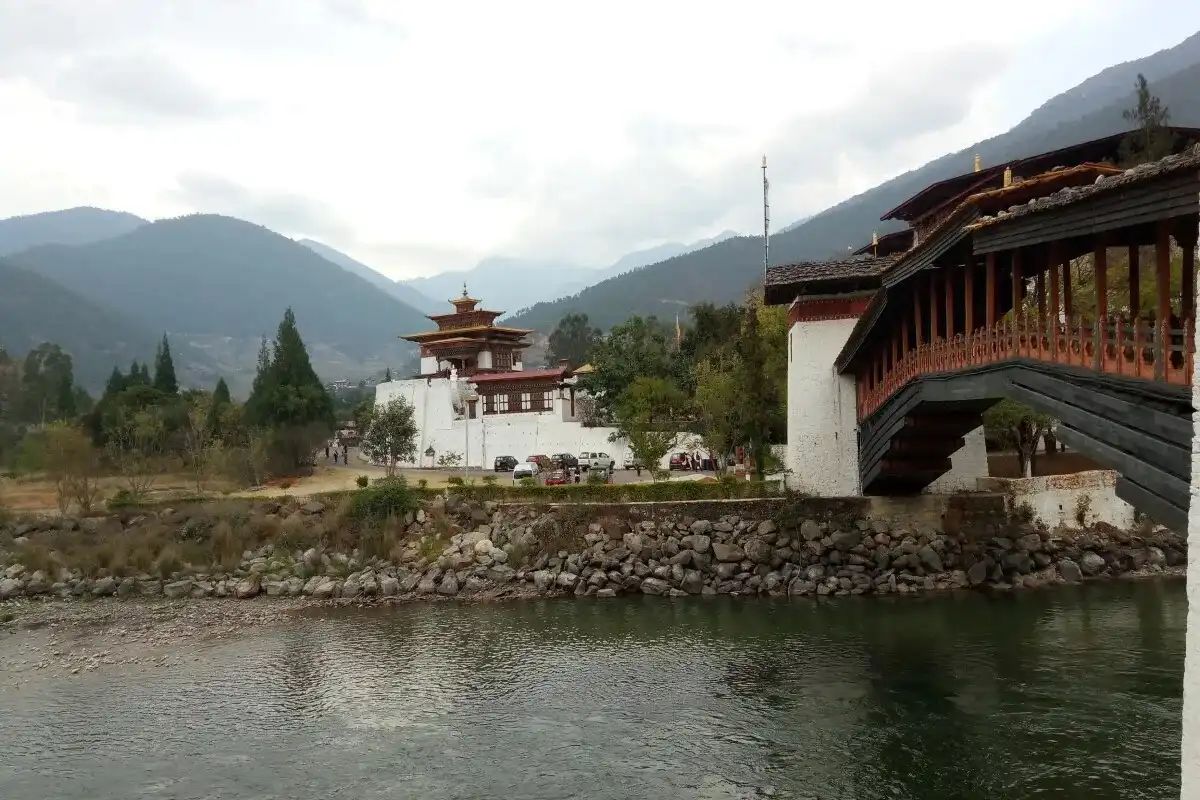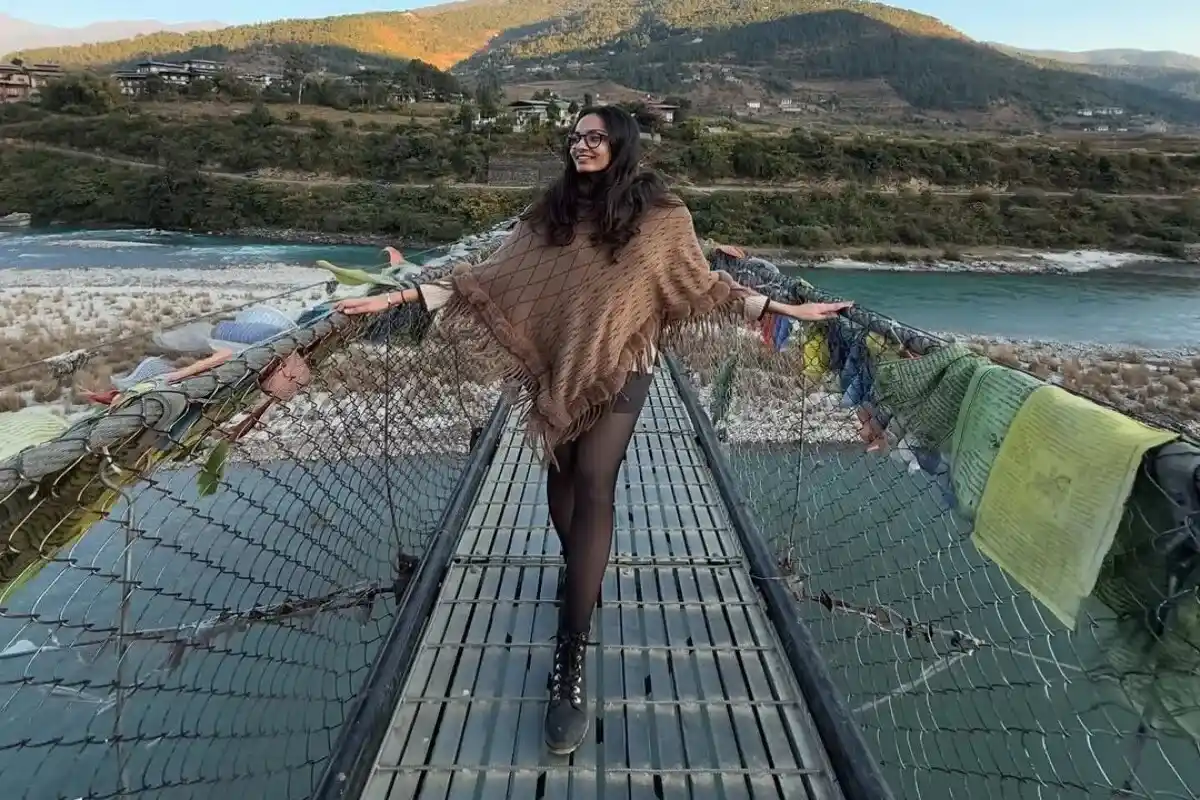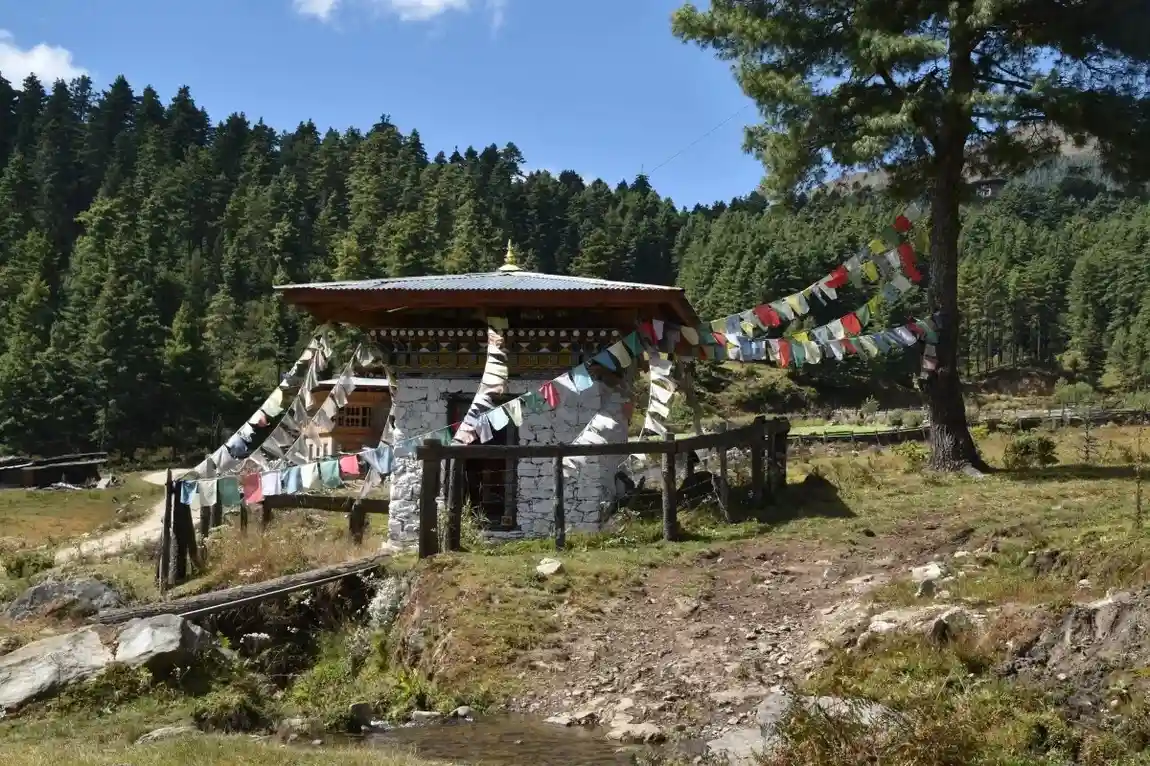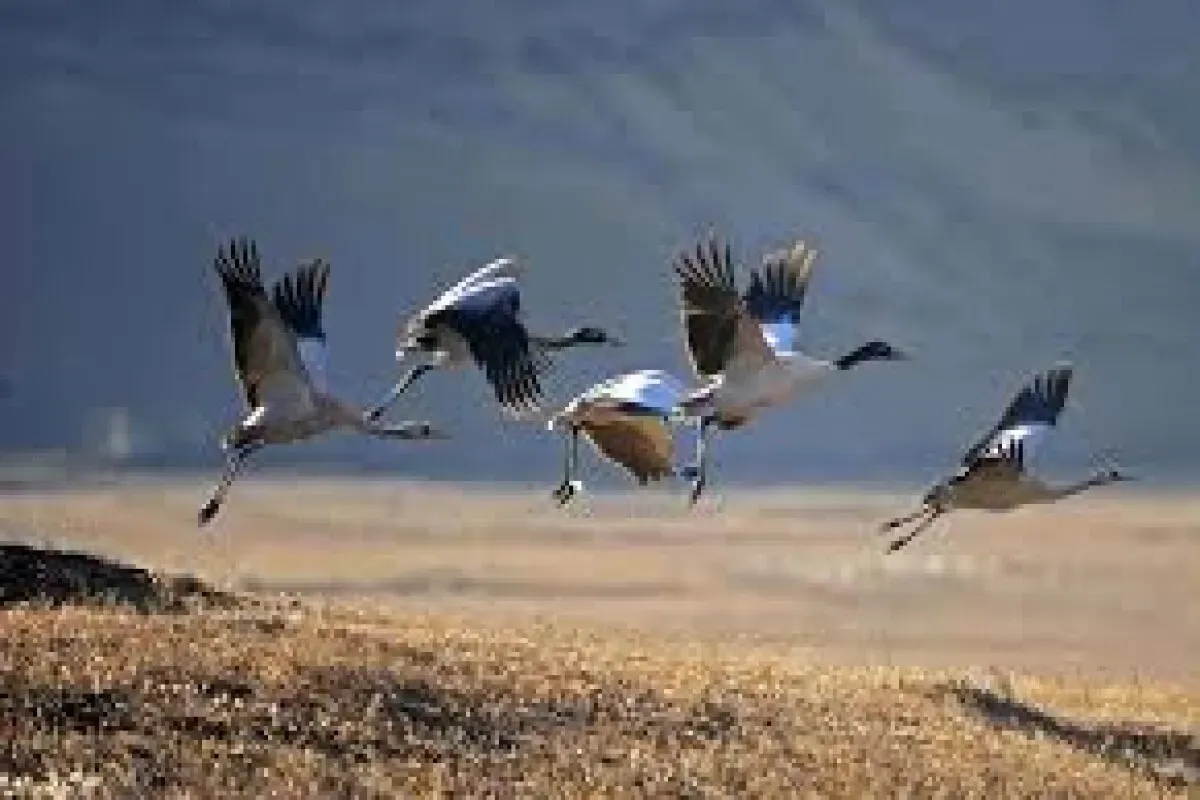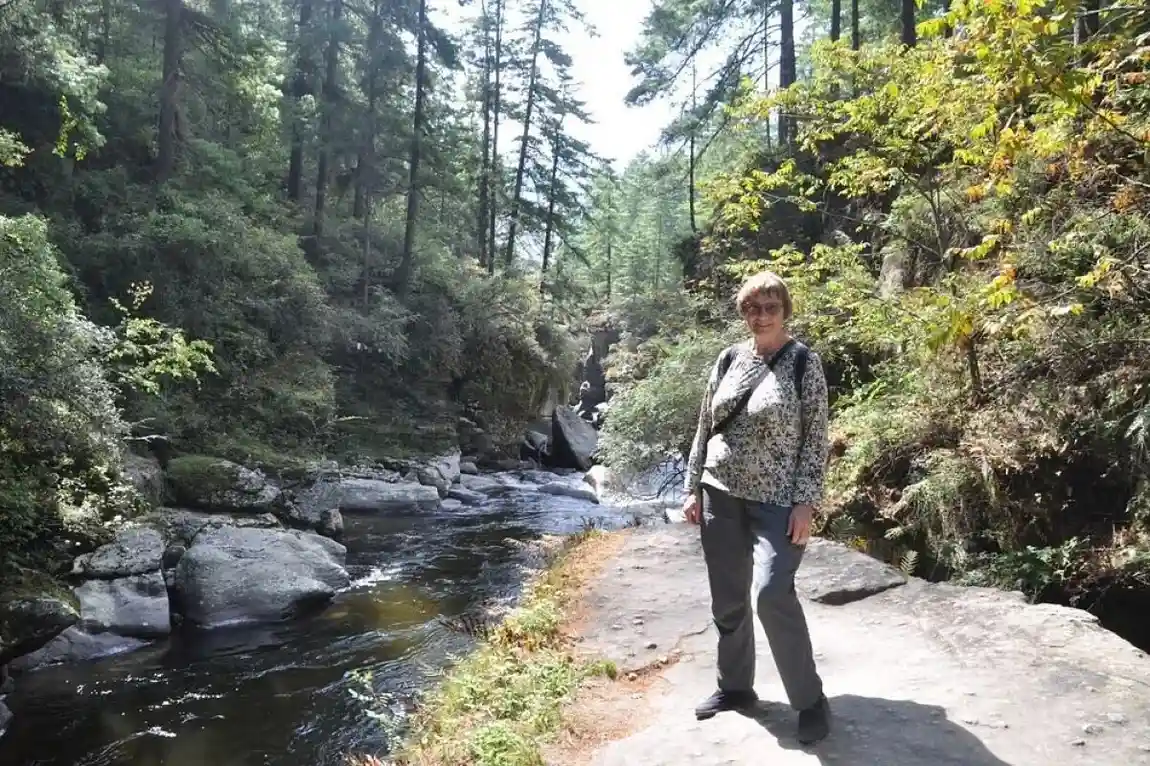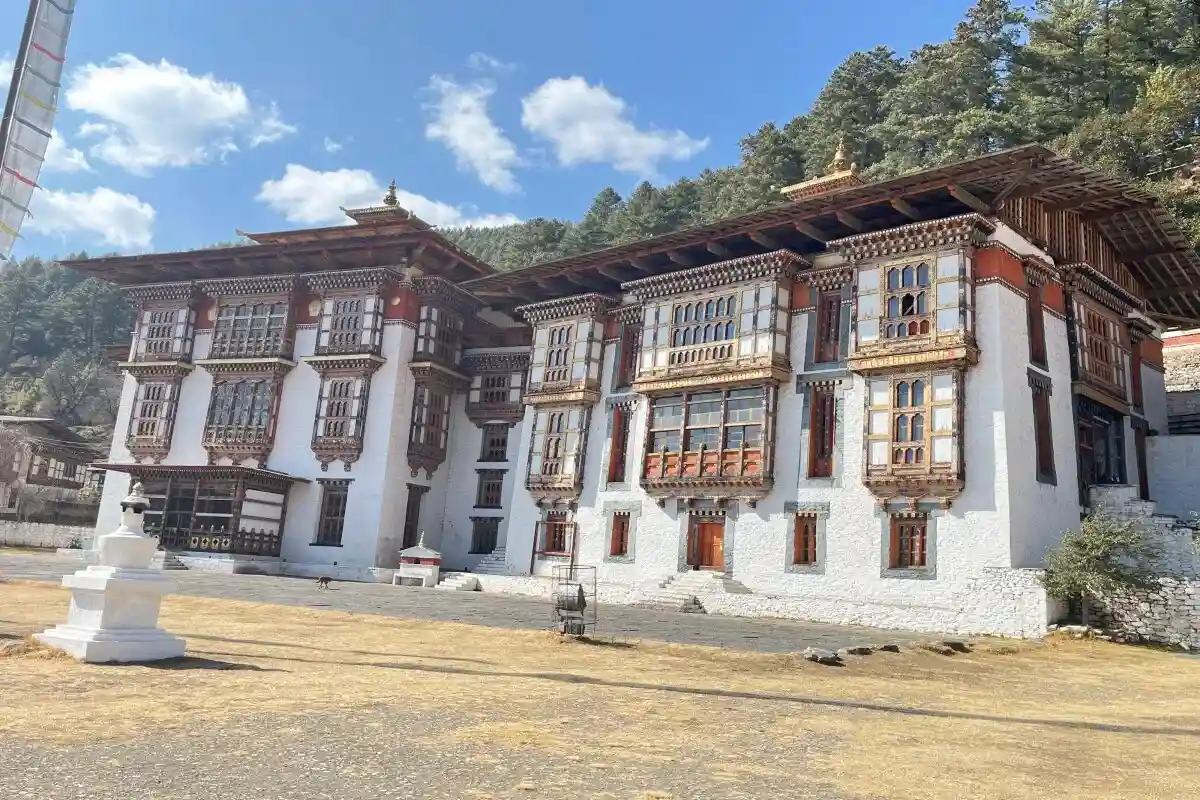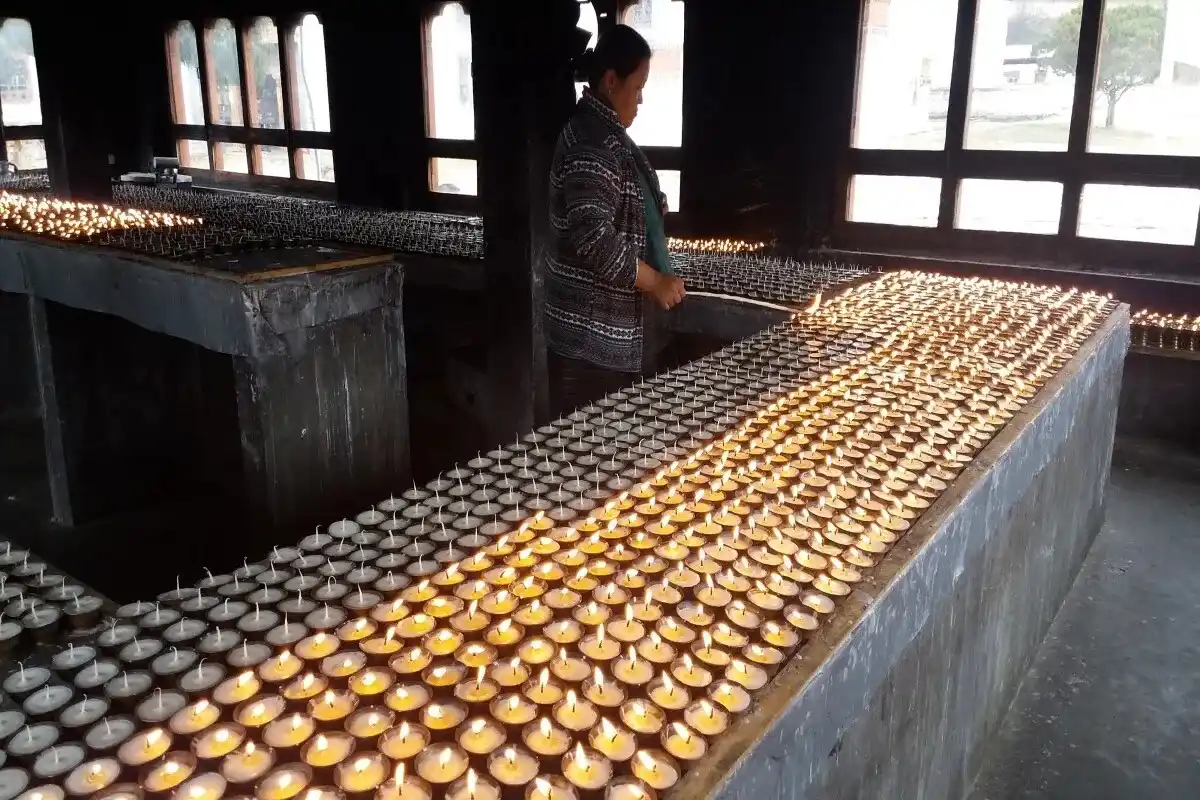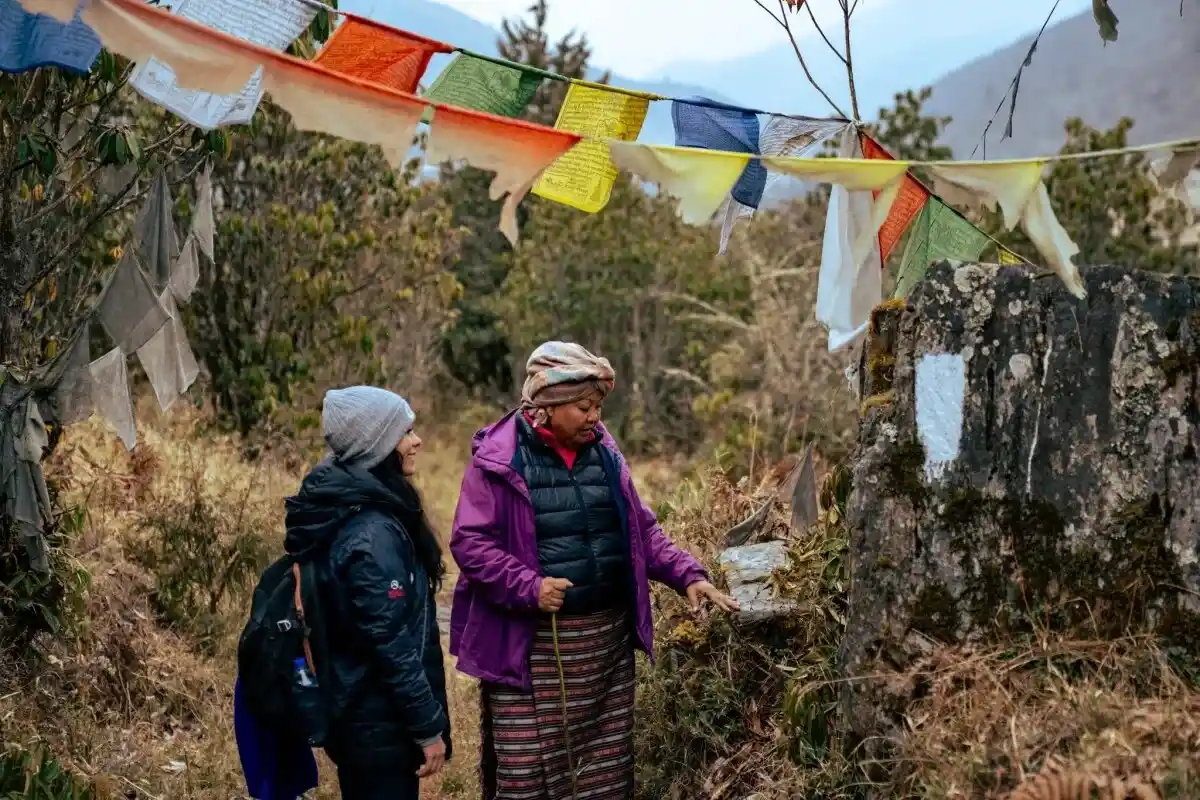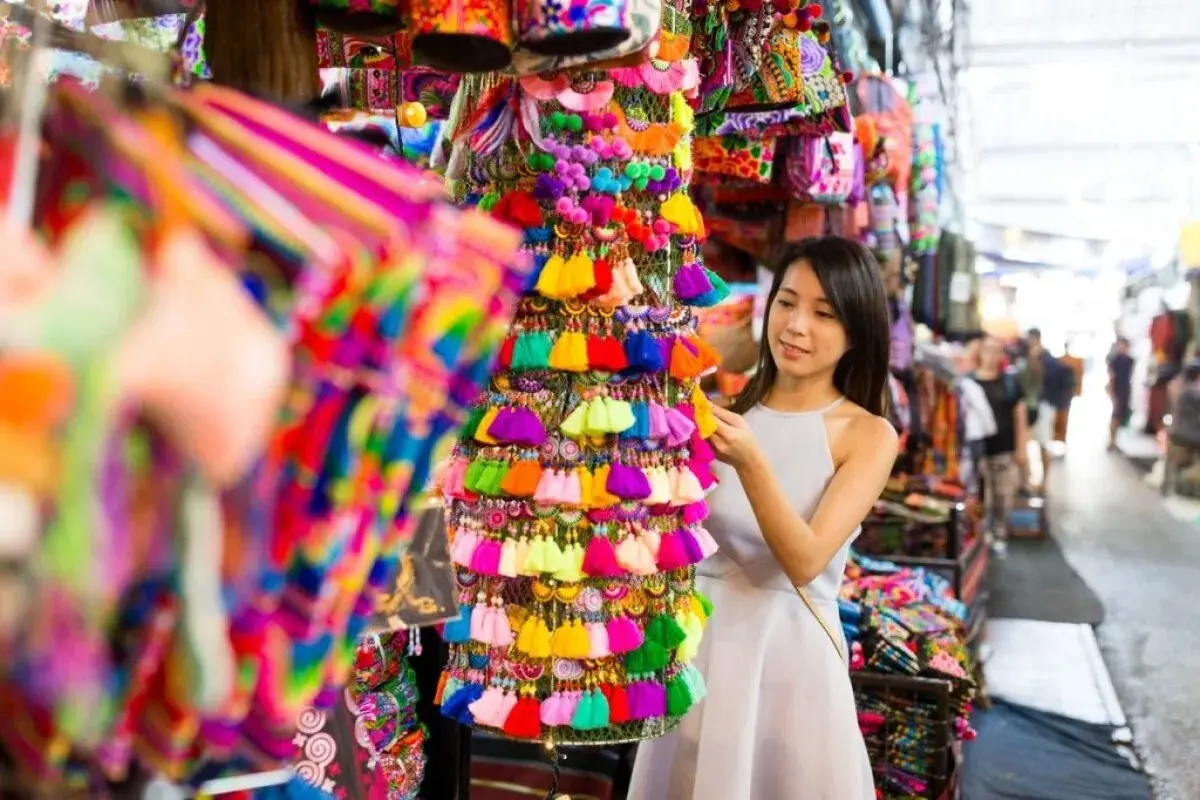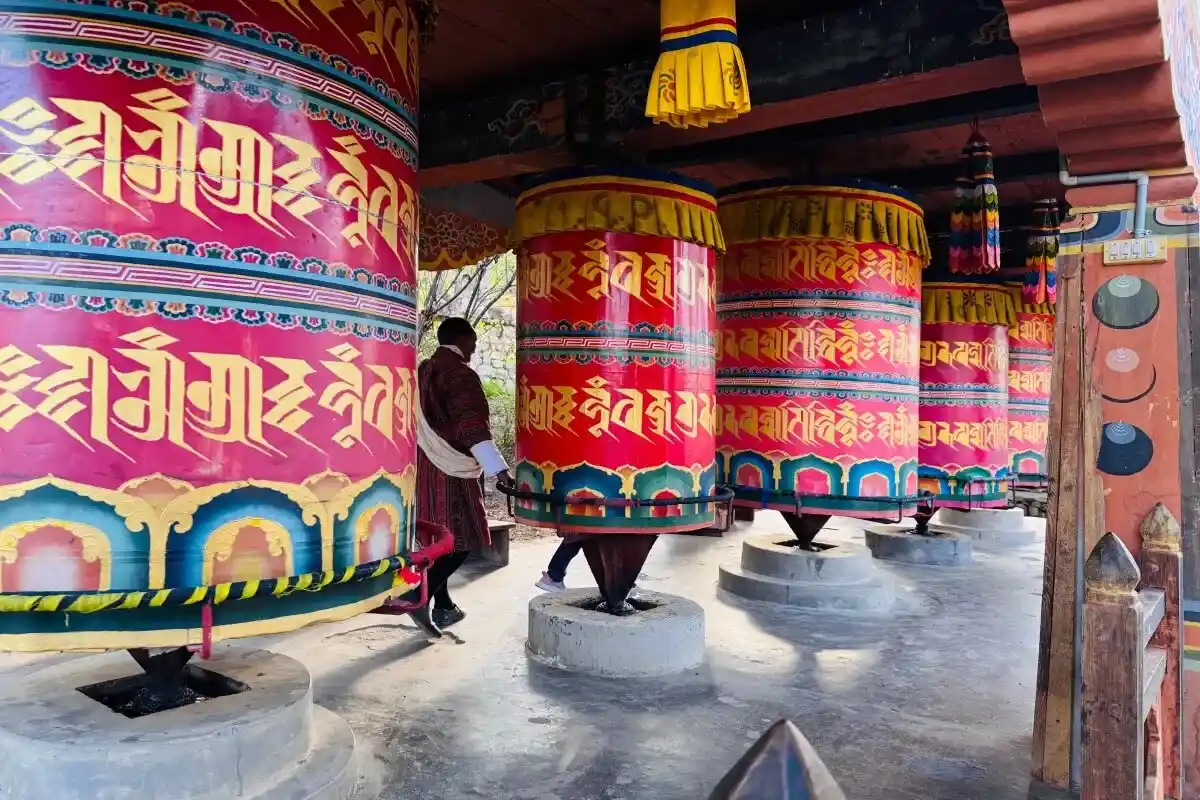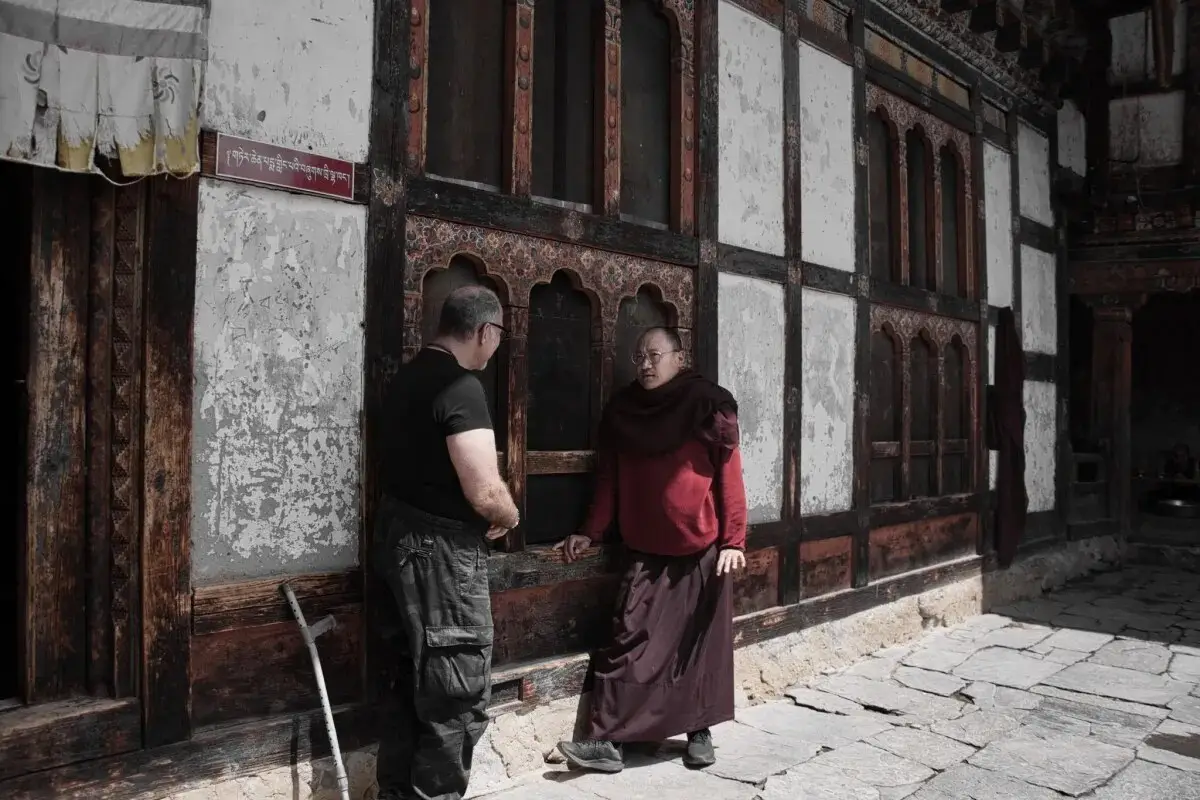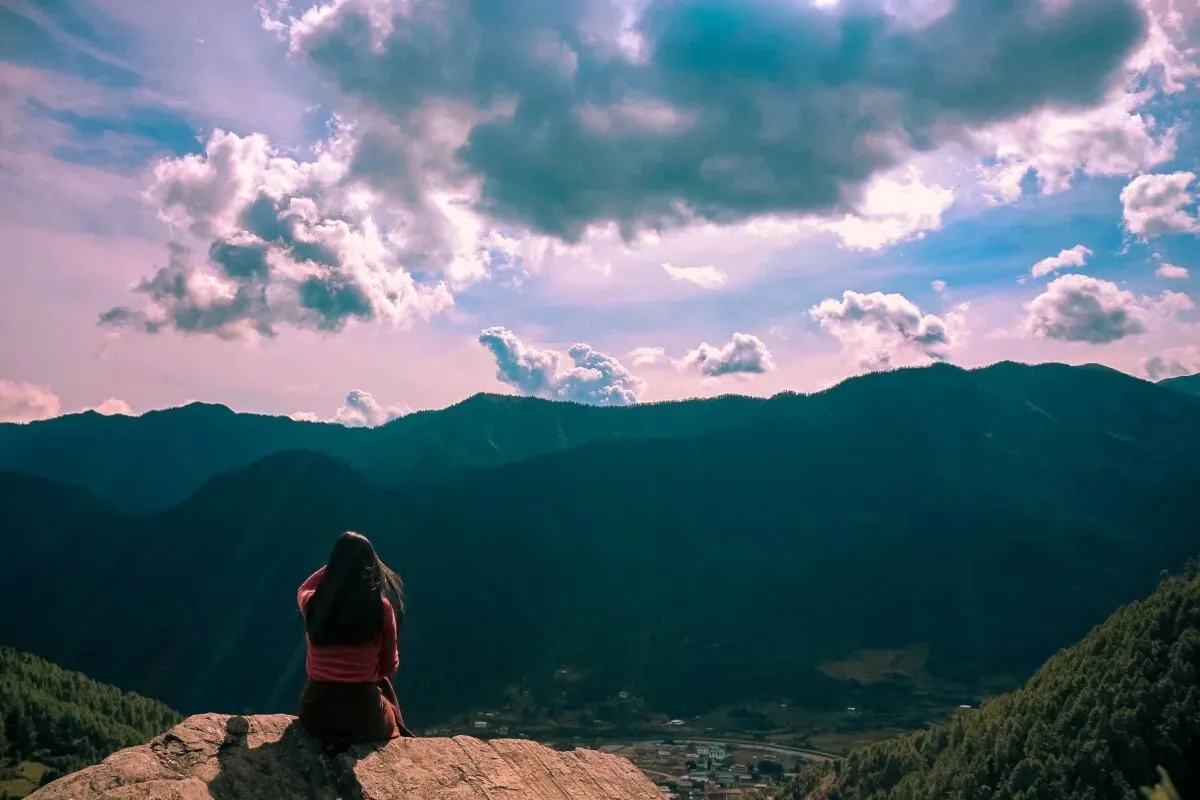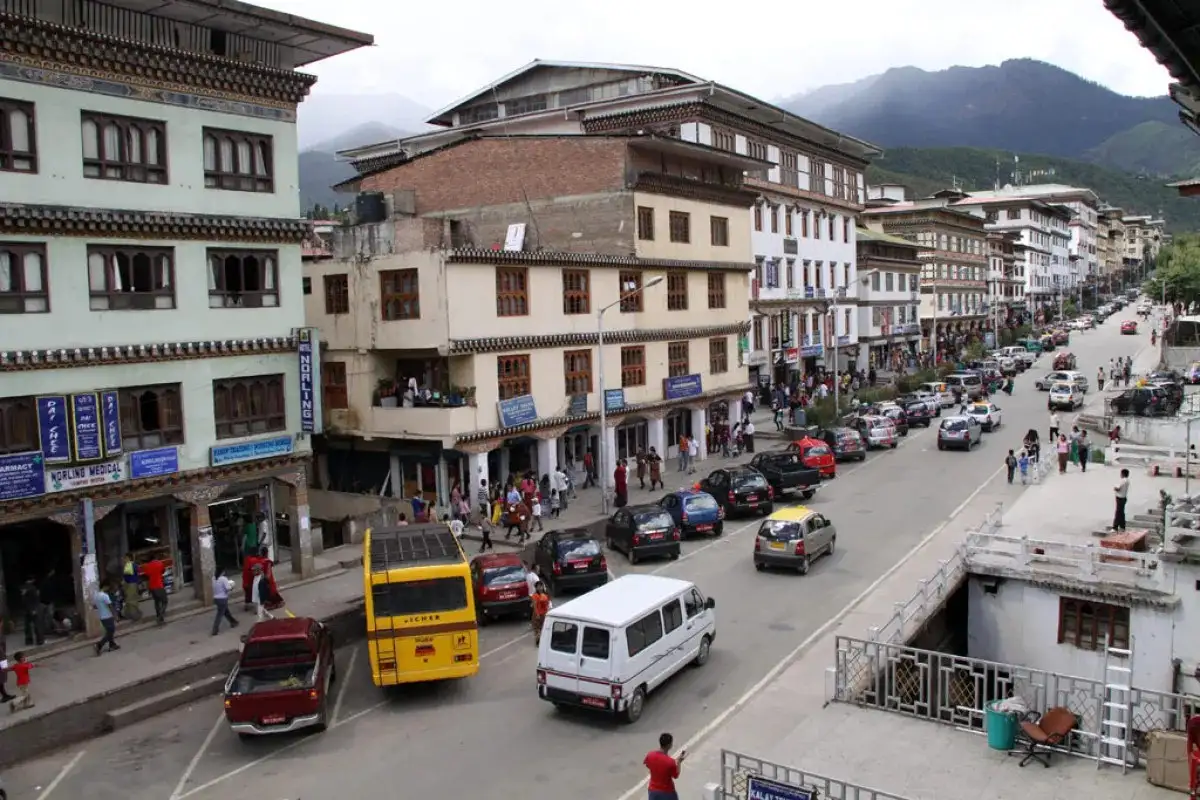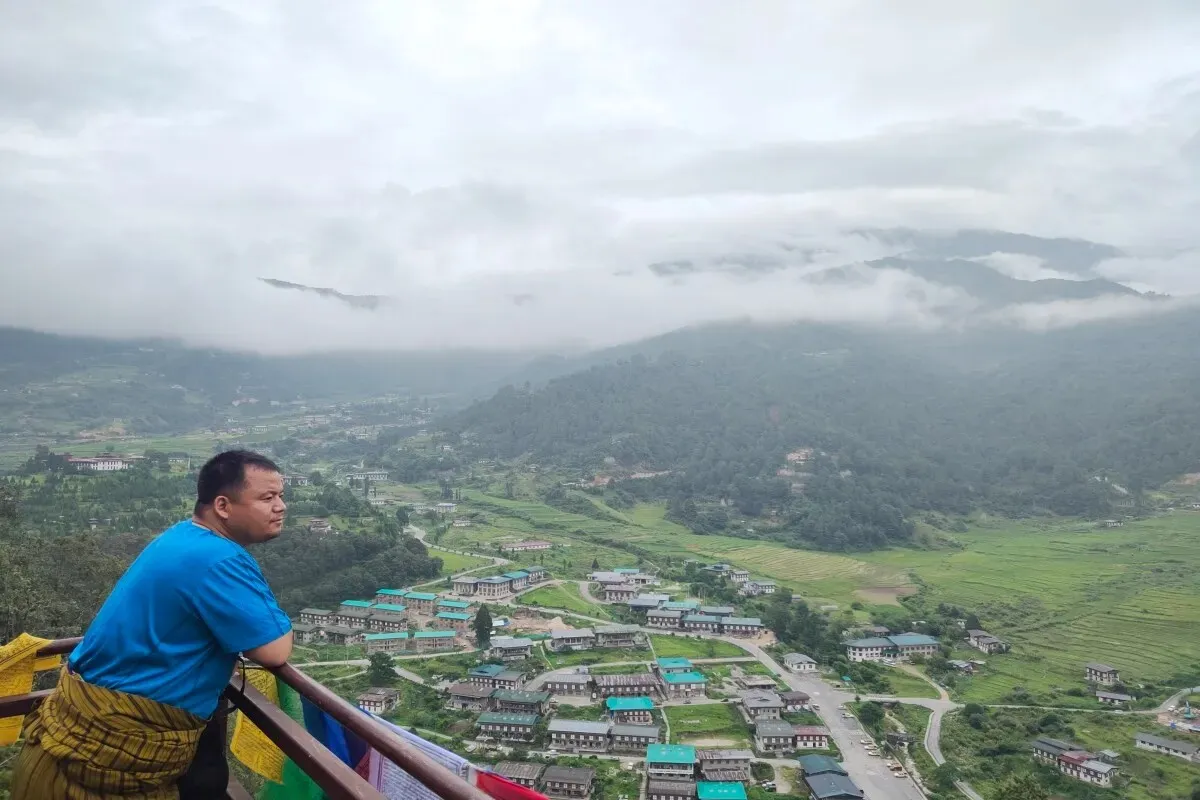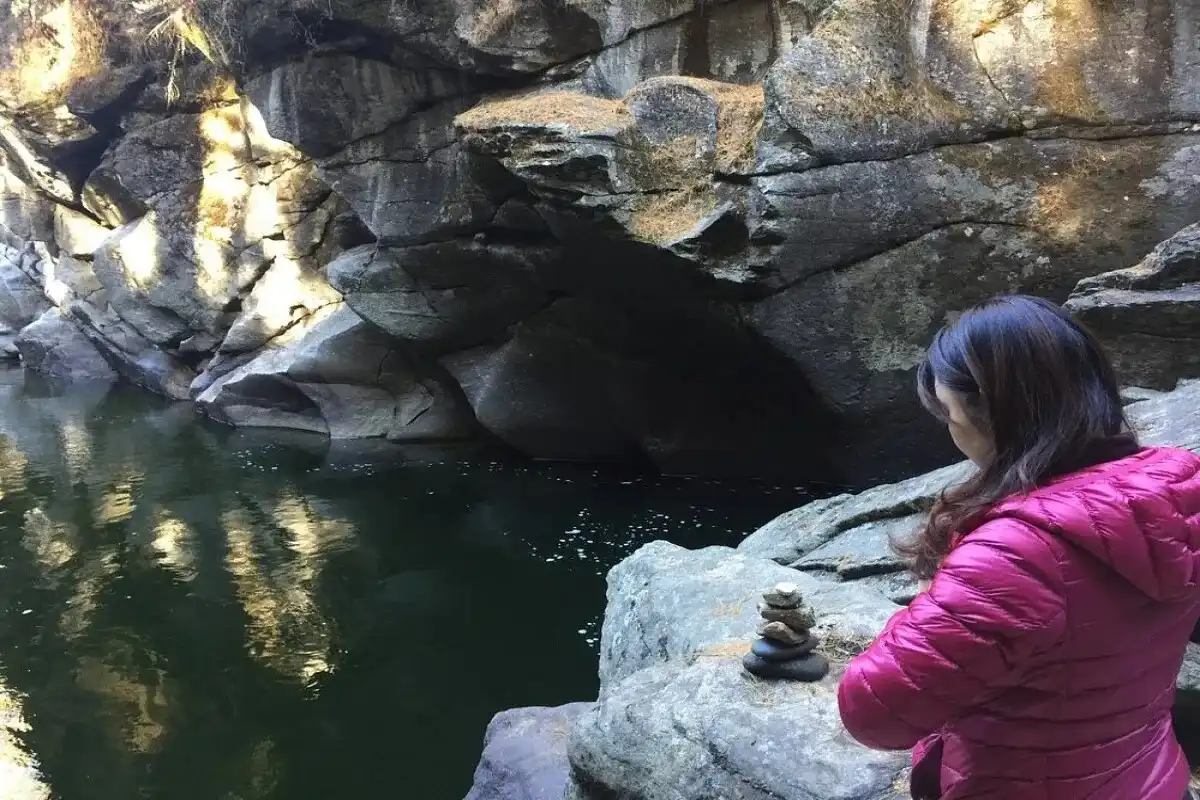Women-Only Solo Travel in Bhutan: Cultural Journey - 7 Days
Bhutan is an exquisite land where women can find a solo adventure filled with peace and culture. Bhutan, with its holy monasteries, breathtaking nature of the Himalayas, and its focus on Gross National Happiness, where female travellers can both feel safe and find spiritual fulfilment as they escape the ordinary life of the city and reconnect with themselves. This 7-day woman-only culture retreat is dedicated to women who want to see Bhutan in a different light, feminine, deep, and self-empowering.
Highlights of the tour
- Hike to Tiger’s Nest Monastery
- Meditate at Buddha Dordenma
- Explore Punakha Dzong and Mo Chhu River
- Cultural Immersion with Women Artisans
Trip Overview
High in the air in the Tiger Nest Monastery and down through the picturesque valley of Phobjikha and toward Bumthang, this journey leads to the possibility of walking centuries-old routes, taking part in spiritual activities, and living in the eternal knowledge of the Bhutanese culture. And no matter whether you are meditating under the giant Buddha Dordenma, meeting local women artists, or relaxing in a hot stone bath, your soul is being nourished at any given moment. It is not only a journey through Bhutan, it is a journey through your inner self.
Highlights of Women’s Wellness & Culture Retreat
Hike to Tiger’s Nest Monastery
Explore Tiger’s Nest Monastery, built at an altitude of 3,120m. The journey is tough but worth it. The scenery is fantastic; one can sit and meditate or think, or take photographs. Such a trip is a symbol of inner strength, which is why it is an effective way of gaining clarity and change among women.
Meditate at Buddha Dordenma
Walk around the impressive statue of Buddha Dordenma in Thimphu, as it is one of the highest seated Buddhas in the world. The statue is situated in quiet mountains where one can meditate. There is also a complex of 125,000 smaller Buddhas surrounding the site, where you can get inner fulfillment and spiritual harmony.
Explore Punakha Dzong and Mo Chhu River
Find out the architectural color of Punakha Dzong, where the spiritual and political history of Bhutan unite. Walk through the peaceful banks of the Mo Chhu River, an ideal place for writing journals and having peaceful walks. The nature and sacred spots provide the atmosphere of both power and peace, which benefits a solo woman traveler who needs a break.
Cultural Immersion with Women Artisans
Connect with the local women artists in traditional villages. Take part in craft sessions of weaving, carving wood, or paper-making. These personalized interactions create real cultural experiences, a sense of feminine strength, and the preservation of local communities.
Best Season for the Bhutan Solo Trip
The ideal seasons to visit Bhutan to have a good solo trip are Spring and Autumn. These are the most constructive months with respect to weather conditions, which include sunny skies, moderate temperatures, and mountain showers, besides other activities such as cultural experiences, short hikes, and wellness programs. During spring, Bhutan lets the valleys bloom with colourful rhododendrons, wild orchids, green landscape, and presents an ideal scenery to be photographed and meditated upon. In its turn, autumn offers crystal-clear views of the Himalayas, golden rice fields, and cooler air to visit temples and mind walks.
Both the seasons match the periods of lively festivals like Paro Tsechu and Thimpu Tshechu, where tourists can watch mask dances and rituals that are sacred. These months also make roads safer, hikes (such as Tiger Nest) more visible, and overall make the experience as a female solo traveller less hectic. Off-season travel can also be beautiful, but it can restrict access because the weather is unpredictable.
Conclusion
A solo travel experience in Bhutan, especially the women-only tour, is not only a vacation, but a holy experience of reawakening, healing, and inspiration. Bhutan offers an invitation of pure peace, enchanting countryside, hospitable locals, and a highly spiritual pace. Indeed, this 7-day trip is exactly what a first-time solo traveller or an experienced one needs, as it allows just the right amount of time to oneself and experience the soulful exploration. No matter whether you are capturing Himalayan scenes, keeping reflections in monasteries, or sharing experiences with Bhutanese women, this travel journey also provides you with experiences that are with you even after you get back home. Make your first Bhutan solo travel a start of your new journey in self-love, peace, and power.
High in the air in the Tiger Nest Monastery and down through the picturesque valley of Phobjikha and toward Bumthang, this journey leads to the possibility of walking centuries-old routes, taking part in spiritual activities, and living in the eternal knowledge of the Bhutanese culture. And no matter whether you are meditating under the giant Buddha Dordenma, meeting local women artists, or relaxing in a hot stone bath, your soul is being nourished at any given moment. It is not only a journey through Bhutan, it is a journey through your inner self.
Highlights of Women’s Wellness & Culture Retreat
Hike to Tiger’s Nest Monastery
Explore Tiger’s Nest Monastery, built at an altitude of 3,120m. The journey is tough but worth it. The scenery is fantastic; one can sit and meditate or think, or take photographs. Such a trip is a symbol of inner strength, which is why it is an effective way of gaining clarity and change among women.
Meditate at Buddha Dordenma
Walk around the impressive statue of Buddha Dordenma in Thimphu, as it is one of the highest seated Buddhas in the world. The statue is situated in quiet mountains where one can meditate. There is also a complex of 125,000 smaller Buddhas surrounding the site, where you can get inner fulfillment and spiritual harmony.
Explore Punakha Dzong and Mo Chhu River
Find out the architectural color of Punakha Dzong, where the spiritual and political history of Bhutan unite. Walk through the peaceful banks of the Mo Chhu River, an ideal place for writing journals and having peaceful walks. The nature and sacred spots provide the atmosphere of both power and peace, which benefits a solo woman traveler who needs a break.
Cultural Immersion with Women Artisans
Connect with the local women artists in traditional villages. Take part in craft sessions of weaving, carving wood, or paper-making. These personalized interactions create real cultural experiences, a sense of feminine strength, and the preservation of local communities.
Best Season for the Bhutan Solo Trip
The ideal seasons to visit Bhutan to have a good solo trip are Spring and Autumn. These are the most constructive months with respect to weather conditions, which include sunny skies, moderate temperatures, and mountain showers, besides other activities such as cultural experiences, short hikes, and wellness programs. During spring, Bhutan lets the valleys bloom with colourful rhododendrons, wild orchids, green landscape, and presents an ideal scenery to be photographed and meditated upon. In its turn, autumn offers crystal-clear views of the Himalayas, golden rice fields, and cooler air to visit temples and mind walks.
Both the seasons match the periods of lively festivals like Paro Tsechu and Thimpu Tshechu, where tourists can watch mask dances and rituals that are sacred. These months also make roads safer, hikes (such as Tiger Nest) more visible, and overall make the experience as a female solo traveller less hectic. Off-season travel can also be beautiful, but it can restrict access because the weather is unpredictable.
Conclusion
A solo travel experience in Bhutan, especially the women-only tour, is not only a vacation, but a holy experience of reawakening, healing, and inspiration. Bhutan offers an invitation of pure peace, enchanting countryside, hospitable locals, and a highly spiritual pace. Indeed, this 7-day trip is exactly what a first-time solo traveller or an experienced one needs, as it allows just the right amount of time to oneself and experience the soulful exploration. No matter whether you are capturing Himalayan scenes, keeping reflections in monasteries, or sharing experiences with Bhutanese women, this travel journey also provides you with experiences that are with you even after you get back home. Make your first Bhutan solo travel a start of your new journey in self-love, peace, and power.
Short Itinerary
Arrive in Paro, visit Paro Dzong and National Museum, evening mindfulness walk or journaling
Drive to Thimphu, explore Textile and Folk Heritage Museums, Buddha Dordenma, local market stroll
Travel to Punakha, visit Punakha Dzong and Suspension Bridge, evening yoga or meditation
Drive to Phobjikha Valley, visit Gangtey Monastery and Nature Trail, evening hot stone bath
Journey to Bumthang, visit Kurje Lhakhang, Jambay Lhakhang and the sacred Burning Lake
Village exploration, weaving or cooking workshop, meet local women artisans and farmers
Return to Paro, visit Kyichu Lhakhang, enjoy wellness time or shopping, and prepare for departure
Women-Only Solo Travel in Bhutan: Cultural Journey Itinerary
Arrive at Paro International Airport and start the trip within the rhythm of peaceful Bhutan. Once you check in at your lodge, join a cultural immersion program to make a visit to the Paro Dzong (Rinpung Dzong), which is a great fortress that provides insight into religious architecture and monastic life in Bhutan. Then you will explore the National Museum, located in an old-style watchtower, where you can find centuries-old artifacts, textiles, and thangka paintings. And in the evening, no matter what you may feel like, you can drink herbal tea in your lodge garden, enjoy a short mindfulness walk, or have a journaling in the starlit Himalayan sky. The peaceful spirit of Paro will lead the way to your spiritual and cultural escapade. It is a perfect acclimatization day, down-to-earth, and an opportunity to get ready for the journey that will tame and enrich the soul.
Thimphu is the capital city of Bhutan, and a mix of tradition and modern life. Start your trip at the Textile Museum and the Folk Heritage Museum, and you will learn a lot about the Bhutanese character and its wool, crafts, and family traditions. Then, visit the Buddha Dordenma, as you have an opportunity to have a wordless meditation under one of the largest statues of seated Buddha on the globe. Have a calm lunch and walk around the Centenary Farmers Market and watch life. In the evening, there is an optional activity that may include keeping a journal or a local craft workshop. Thimphu provides a secure as well as enriching atmosphere in which solo women travelers may have a fine balance of socialization and solitude.
Take a drive through Dochula pass, viewing the Himalayan ranges graced with 108 chortens. After reaching Punakha, you can tour the grand Punakha Dzong, well located between the rivers Mo Chhu and Pho Chhu. Spend some time over its fine murals and religious artefacts, as well as serene courtyards. After that, cross the Punakha Suspension Bridge and experience the silence and power of the river and mountain winds. You may choose a little bit of light yoga or guided meditation at your eco-lodge. The capacity of Punakha to offer a strong impression of religion and the setting in harmony with nature constitutes it one of the spots that solo women travellers have enjoyed to find spiritual recovery and scenic enjoyment.
Next, visit the beaten track and remote Phobjikha Valley, a glacial valley, and renowned for having wonderful open terrains and spiritual peace. Start by going to Gangtey Monastery, where you may witness the morning prayers or silently meditate with the monks. The serene surroundings are ideal for relaxing and stabilizing oneself. Subsequently, do visit Gangtey Nature Trail, which is a soft and easy hike through forests of pine trees and village tracks- almost perfect to relax and take pictures. You could also see black-necked cranes (seasonal) flying through the valley following the magic silence of this religious place. Eat a locally grown dinner and relax in a hot stone bath at a cosy eco-lodge in the evening. Phobjikha is untouched beauty with not much rush of human traffic, and that makes the lone traveller get close to nature and their soul.
Proceed to Bumthang, which is commonly referred to as the spiritual soul of Bhutan. Start your sightseeing in Kurje Lhakhang, a holy monastery that stands on the meditation place of Guru Rinpoche. Then pay a visit to one of the oldest temples in Bhutan, known as Jambay Lhakhang. In the afternoon, stroll to the mystic Burning Lake (Mebar Tsho), where there are tales of treasures hidden and deities appearing. Pray at the riverbank, be still, and make butter lamp offerings. The holy vibration of Bumthang inspires deep reflection and emotional healing. The slow breeze in the mountains and the spiritual sense of importance make it a valuable resting point that is part of your solo adventure. You can end your day with the herbal tea and storytelling of your host family or the lodge keeper.
Dedicate your day to doing something around the local culture with real experiences. Excursion to the village and encounters with local Bhutan women artisans who do ancient weaving, papermaking, and carving of wood. Focus on a weaving workshop, dye natural threads yourself, or attend a type of cooking training and find out more about Bhutanese cuisine. Such close gatherings establish real relationships and allow us to save the traditional knowledge. Stroll around farmlands and meet farmers to talk to them about the Bhutanese sustainable lifestyle. You can also attend a women's cooperative or school to understand how a society lives its life with the touch of community and compassion. It is a perfect experience for the conscious individual traveller because this immersive day is filled with inspiration and a sense of empowerment, and a rare state of cultural exchange.
On the last day, you will fly back to Paro and spend the time thinking back about your week of transformation and inner renewal. You can explore local markets and purchase a handicraft souvenir, or have one last wellness experience, a massage, or a nature walk in nature depending on the time slot you have during the flight. This is why, before leaving the country, many tourists decide to visit one of the oldest temples in Bhutan, the Kyichu Lhakhang, where they pray their final prayers or at least sit in meditation. At the end of your Bhutan solo trip, you will not only be carrying back memories, but also a rejuvenated self, an enriched understanding of being in the moment, and the quiet power of rejuvenating solitude that makes the journey uniquely yours.
Know Before You Travel
-
Activity that can be done:
There are wide range of leisure activities that can be done in a Bhutan solo trip that feeds the body and the soul. The experience of cultural sightseeing is included in the trip as its core there are visits to ancient dzongs, museums, and witnessing spiritual rituals in active monasteries. Activities that are focused on spirituality and mindfulness, such as guided meditation retreats, lighting of butter lamps, or revolving prayer wheels at sacred places, grant a person time of serenity and reflection.
Single travellers, too, can get some light adventure around, such as gentle hikes, village strolls, and the scenic walk to the Tiger’s Nest Monastery, and the perfect constructive mindfulness exercise. The beautiful nature of Bhutan makes photography and exploration tasks worth doing, capturing misty pines, blazing festivities, and colourful prayer strings playing with the wind.
Culture is a multilateral part of the experience, and it is possible to meet some local female craftsmen, attend a course about folk art, or take a cooking lesson. All the activities are intentionally set at a gentle pace, making it ideal for thoughtful self-discovery and personal restoration.
FAQs for Women-Only Solo Travel in Bhutan: Cultural Journey
Yes, Bhutan is a very safe country in the world to travel as a solo woman traveller. We are responsible for the overall safety measures.
March-May is the spring season, and September-November is the autumn season, when Bhutan has good weather and colourful festivals, which make it the best season to travel in Bhutan.
Yes, Bhutan tour packages can be customized as you want.
Yes, we have experienced guides, and you will be guided by them.
Yes, physical fitness is required for this trip.
Yes, there are a bunch of packages our agency provides for solo female tours to Bhutan with proper guides and carefully designed cultural and wellness activities.
You need a visa and all necessary permits for your trip. These documents can not be received on the day of your arrival, so they must be processed before coming here. After you book a trip with us, we will manage these papers for you. Your Bhutan visa is arranged by Orrog as part of the package.
The main way to come to Bhutan is through Paro International Airport, which is well-connected to cities like Bangkok, Delhi, Kathmandu, and Singapore. Most people arrive by air, but if you plan to come via road, you can enter through Phuentsholing, located on the southern border with India, which is the most commonly used entry point.
It is recommended to apply for the visa at least 20 days before your planned departure date so that there is enough time for processing your Bhutan visa, finalizing your itinerary, and arranging your guides and transportation. Although visa processing itself is relatively fast once payment is received, early preparation helps avoid delays and ensures availability, especially during peak seasons (spring and autumn).
You don’t require a passport-size photo for the visa, but it is wise to carry at least 2–4 recent passport-sized photographs during your trip. These may be needed for local permits, registration, or when applying for a local SIM card upon arrival in Bhutan.
Yes, you can lengthen your stay in Bhutan either before or after your trip. Bhutan’s tourism model requires visitors to pay a Sustainable Development Fee (SDF) and a daily package cost, so any extra days will involve additional charges. Extensions are a great opportunity to explore cultural sites in Paro, Thimphu, or even add another short trip or day hike.
Yes, Bhutan requires full tour payment in advance before your visa can be processed and issued. The government of Bhutan regulates this policy to ensure that all travel arrangements are confirmed through a licensed Bhutanese tour operator. We are a licensed tour operator that ensures you have everything you need for a trouble-free trip.
Any personal expenses are not covered in the package like:
- Tips for your guide and other staff
- Bottled drinks and snacks(personal expense)
- Souvenirs or local crafts
Credit cards are easily accepted in major cities like Paro and Thimphu. But in remote areas, you may not have access to a card or an ATM. So, it is best to carry some cash before heading for the trip.
Tipping is not mandatory, but it is a widely appreciated gesture and a customary way to show gratitude for good service. The tipping guideline would be to give USD 5-10 per day as a tip for the guides and other staff.
Paro International Airport is the only international airport in Bhutan. It is well connected by flights from cities like Bangkok, Delhi, Kathmandu, and Singapore.
Yes, airport pick-up and drop-off are included in the package. We will have your guide and driver meet you at the airport and transport you to your hotel.
While Bhutan's roads are mostly paved, some parts are narrow, winding, and occasionally affected by weather. However, we ensure your travel is safe, well-maintained, and driven by an experienced professional throughout the journey.
The Bhutanese Ngultrum is used in Bhutan. All local transactions during the trip will be in BTN.
US Dollars (USD) are generally accepted at larger hotels, souvenir shops, and tour operators, particularly in Paro and Thimphu. However, it’s advisable to convert your currency to BTN for general purchases in rural areas. Other currencies like the Euro or the Pound are not commonly accepted directly.
No, credit or debit cards are not accepted on the trip, as it takes you through remote regions with no banking or electronic payment access. All trip-related payments like accommodation, meals, permits, etc, are paid in advance.
You can exchange foreign currency at the Paro International Airport, at banks, or through licensed money changers in cities like Thimphu and Paro. It's best to exchange enough cash before heading out on the trip.
The national language is Dzongkha, but many Bhutanese also speak English. If you speak English and are worried about communicating with the local people, you will have your guide as a translator.
Yes, all licensed tour guides in Bhutan are required to speak fluent English. Many are also trained in other languages such as German, Japanese, or French. Communication during the trip will be smooth and clear in English.
Most signboards, tourist maps, and information brochures are written in English, especially in tourist destinations like Paro, Thimphu, and trailheads. Directional signs along routes are often labeled in both Dzongkha and English.
No, learning Dzongkha is not at all needed for the trip, but knowing a few basic words like "Kuzu zangpo la" (Hello) or "Kadrinche la" (Thank you) is a good way to interact with the locals.
Language barriers are minimal, as your guide will handle all communication with locals and support staff. Your guide will translate for you during your interaction with the locals.
To greet people, you can greet with locals “Kuzu zangpo la” (Hello) by performing a slight bow. Most common greetings include physical greetings, such as shaking hands less visible, especially in rural areas.
Yes, but remember to seek permission, especially when taking photos of monks, locals, or temples. Please note that clicking photos is not allowed at most religious sites.
Visitors should dress modestly and respectfully. This means:
- Covering shoulders and knees
- Removing hats and sunglasses
- Not wearing shorts or sleeveless tops
This applies to both men and women.
Yes, Bhutanese society is deeply rooted in Buddhism and tradition. Here are some key taboos:
- Do not point your feet at people or sacred objects
- Never touch anyone on the head, as it is considered sacred
- Walk clockwise around temples, stupas, and religious monuments
- Avoid public displays of affection
While gifts are not expected, they may be accepted graciously if given with respect. It is advisable to consult with the guide before giving out anything.
Bhutan typically uses Type C, Type D, and Type G electrical outlets. Standard safe voltage is 230V and frequency is 50Hz; therefore, ensure that your equipment is compatible with this voltage.
Indeed, it is highly advised to take along a universal travel adapter, particularly one to fit a variety of types of plugs, because plugs can be different in a hotel or a guesthouse.
Bhutan follows Bhutan Time (BTT), which is UTC/GMT +6 hours. This time zone remains consistent throughout the year.
No, Bhutan does not observe daylight saving time. The country maintains the same time year-round.
Bhutan is 30 minutes ahead of India. For example, 12:00 PM in India is 12:30 PM in Bhutan.
Yes, souvenirs can be bought in Paro or Thimphu before or after the trip.
Some popular souvenirs include hand-woven textiles (kira and gho fabric), prayer flags, thangka (religious scroll) paintings, handmade paper products, traditional masks, and Buddhist artifacts.
You can do some gentle bargaining in local street markets. However, in government-run shops and fixed-price stores, prices are usually non-negotiable.
Yes, you can easily purchase a SIM card upon arrival in Bhutan. We will assist you with the process, and you'll need a passport copy and a passport-sized photo.
No, internet access is not available during the trip. However, Wi-Fi is available in hotels in Paro and Thimphu before and after the trip.
Along our trip, we will go through different places. So, we will stay in accommodation that is available, ranging from boutique wellness resorts and eco-lodges to comfortable 3-star hotels and trekking campsites.
Yes, Bhutan has a growing number of wellness-focused retreats and luxury lodges that offer spa, yoga, and meditation programs. So, you will be staying in wellness resorts to lift your overall experience.
Yes, most accommodations provide hot water and heating. During treks, basic facilities are available, but comfort varies depending on altitude and remoteness.
You need to be moderately fit for activities like hiking, cycling, and trekking. We can tailor itineraries based on your fitness level.
Absolutely, our programs suit all experience levels, from beginners to advanced practitioners.
Our guides are trained in basic first aid and altitude-related issues. They will ease you, and an emergency evacuation will be arranged if necessary.
Depending on the tour, you experience yoga, meditation, traditional Bhutanese hot stone baths, herbal treatments, and spiritual rituals guided by monks.
Yes, our retreats include sessions with monks or lamas for mindfulness, Buddhist teachings, and guided meditations.
We provide nutritious, mostly organic meals, often prepared with locally grown ingredients. If you have any special diet plan, please inform us beforehand so that it can be accommodated.
Yes, vegetarian, vegan, and detox-friendly menus are available on request, especially at wellness-focused properties.
We offer trekking, day hikes, cycling, nature walks, rafting, bird watching, and cultural village stays, often integrated with wellness themes in Bhutan.
Yes, on multi-day treks, you’ll hike daily, typically 4–7 hours a day. However, routes can be customized with rest days.
You should bring layered clothing, hiking boots, sun protection, personal toiletries, a reusable water bottle, and any personal health or wellness items.
We provide yoga mats, but you can bring your own for comfort or hygiene. For treks, essential gear like sleeping bags and tents is provided.
The package includes accommodations, all meals, professional guides, entrance fees, wellness sessions, equipment (for treks/yoga), and all transport.
It’s best to book 2 to 4 months in advance, especially during peak trekking or festival seasons.
The Internet is available in most hotels and wellness centers, but connectivity is limited or unavailable during treks or in remote areas.
Reviews & Ratings
-
Guarantee -
Thimphu,Bhutan -
975+17160228
Ready to Explore Bhutan?
Start your journey today and discover the magic of Bhutan with our expert guides and carefully crafted tours.
Book This Trip
-
No booking or credit card fees -
Best price guarantee -
Full customize trip
Ask a Question
Feel free to ask us anything about this tour. A travel expert will then get back to you as soon as possible
Ready to Explore Bhutan?
Start your journey today and discover the magic of Bhutan with our expert guides and carefully crafted tours.

